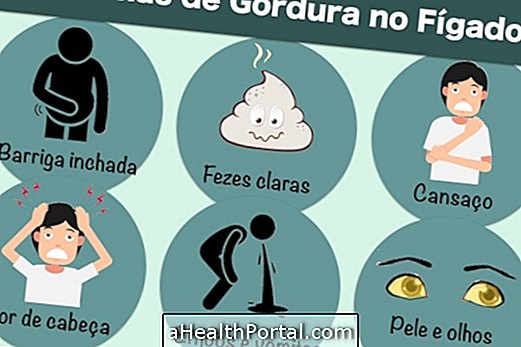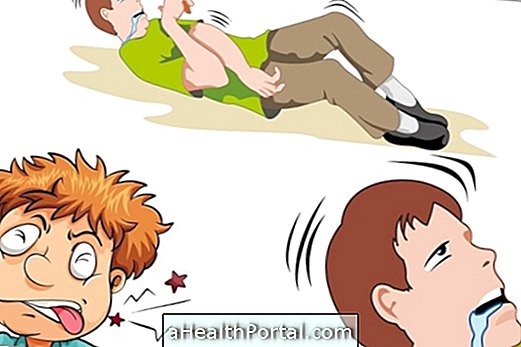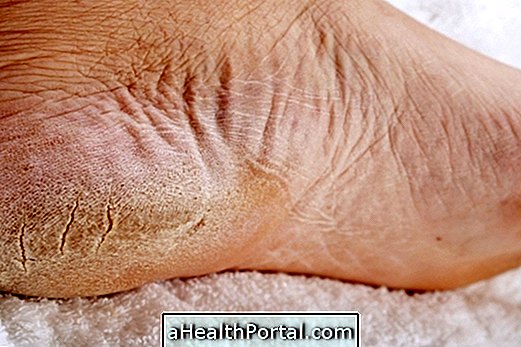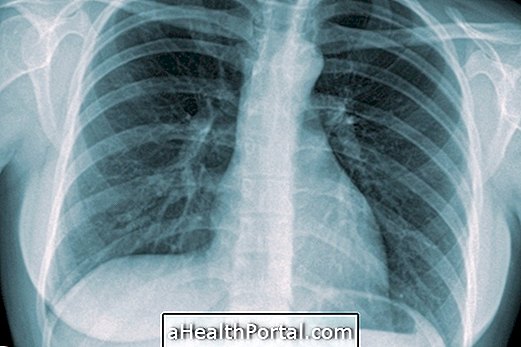The most common symptom of early-stage Lyme disease is the appearance of a circular red spot on the skin around the site of the infected tick bite that grows over time and can reach more than 30 cm.
This disease is not serious, but if not treated with antibiotics prescribed by the doctor, it can lead to more serious complications such as meningitis or arthritis, for example, causing symptoms such as severe headache and stiff neck or joint swelling. Learn more about Lyme Disease.


Main symptoms
The symptoms of Lyme disease are progressive, being classified in:
Early Symptoms
The initial symptoms of Lyme Disease occur between 3 to 30 days after the infected tick bite and include:
- Injury and redness in the skin at the site of the bite, similar to an ox eye, between 2 to 30 cm that increases in size with time;
- Tiredness;
- Pain in muscles, joints and headache;
- Fever and chills;
- Stiff neck.
When you have any of these symptoms, especially along with the blemish and redness on the skin, it is advisable to immediately consult a general practitioner to confirm the diagnosis and start treatment with the antibiotics.
Late symptoms
Late symptoms of Lyme disease arise when treatment is not initiated on time and are related to the onset of complications such as:
- Arthritis, especially in the knee, where there is pain and swelling in the joints;
- Neurological symptoms, such as numbness and pain in the feet and hands, paralysis of the muscles of the face, memory failures and concentration difficulties;
- Meningitis, which is characterized by severe headache, neck stiffness and increased sensitivity to light;
- Heart problems, being noticed due to palpitations, shortness of breath and fainting.
In the presence of these symptoms, it is recommended to go to the hospital to receive treatment of the disease and avoid the development of complications that, when left untreated, can lead to death.

Cause of Lyme Disease
Lyme disease is caused mainly by the bite of ticks infected by the bacterium Borrelia burgdorferi and which feed on human blood, especially the ticks of the species Ixodes ricinus . In order for these species of tick to transmit the disease to people, it needs to be held in the person for at least 24 hours.
This bacterium may be present in the blood of several animals, such as deer and rats, for example, and when the tick parasitizes these animals, it acquires the bacteria and can transmit to other animals and people.
Lyme Disease Confirmed Tests
Lyme disease can be detected through blood tests that can be done about 3 to 6 weeks after the person is bitten by the tick, which is the time it takes for the infection to develop and show up on the tests.
In this way, the tests that can be used to detect Lyme disease include:
- ELISA test: a type of serological test performed to identify specific antibodies produced by the immune system against the bacteria and thus to verify the concentration of this bacterium in the body;
- Western blotting is a type of test in which a small blood sample is used to study the proteins the antibodies used to fight the bacteria that causes the disease.
Lyme disease is confirmed when the results of the two tests are positive. In addition, your doctor may order a CBC and Protein C Reagent (CRP) dosage to identify you are having an infection.
Treatment of Lyme Disease
Lyme disease is treated with antibiotics prescribed by the doctor for about 2 to 4 weeks, and it is important for the patient to be treated until the end, even if they are feeling better. In severe cases, the patient may have to be hospitalized to receive antibiotics through the vein.
In the case of a lack of treatment or ineffective treatment, complications such as arthritis can occur, for example, being indicated to perform physiotherapy to reduce pain and restore mobility, allowing you to perform normal daily activities.



























